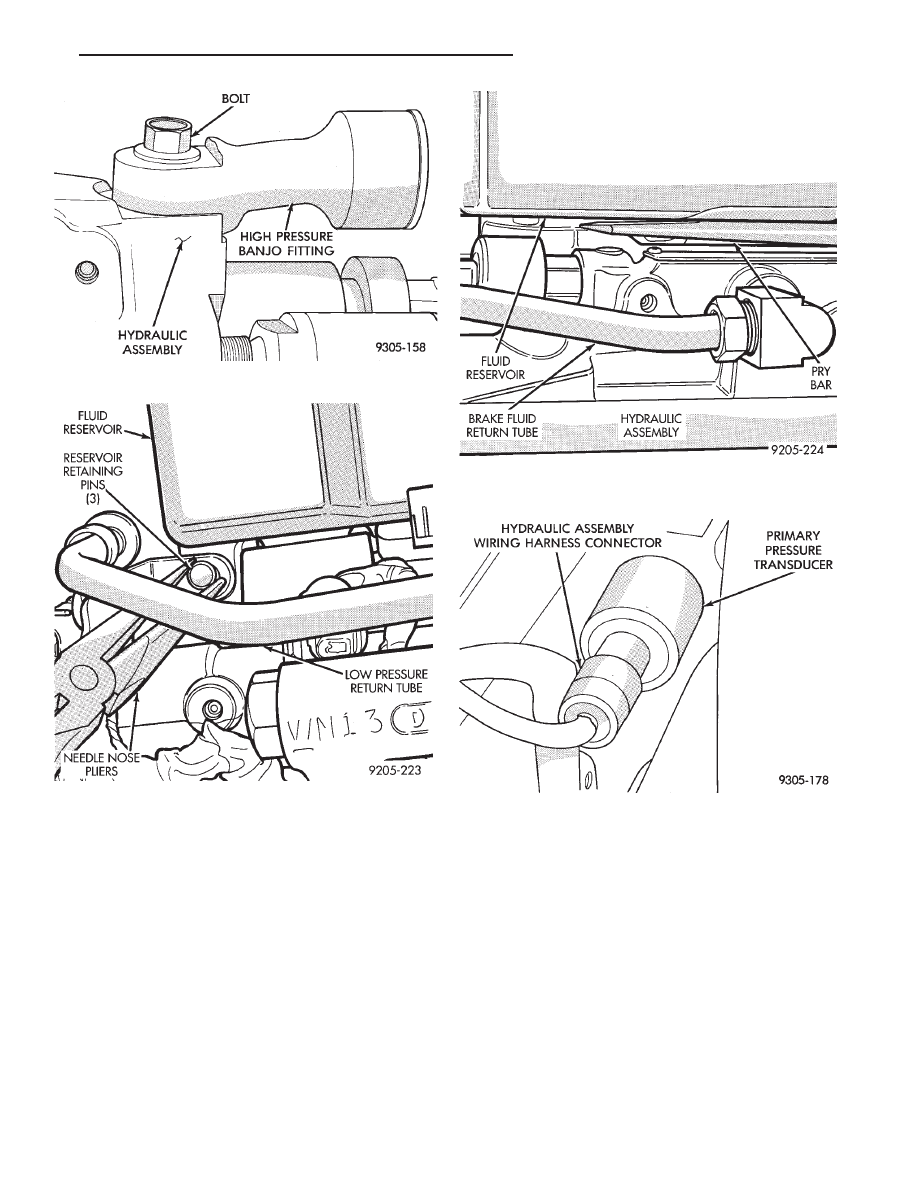Chrysler Le Baron, Dodge Dynasty, Plymouth Acclaim. Manual - part 239

(9) Using Socket, Special Tool 6684 loosen and re-
move primary pressure transducer from hydraulic as-
sembly (Fig. 17)
INSTALL
(1) Install primary pressure transducer into hy-
draulic assembly by hand, until O-ring is fully seated
into hydraulic assembly. Then torque primary pres-
sure transducer, into hydraulic assembly, using
Socket, Special Tool 6684, to 12 N
Im (106 in. lbs.).
(2) Connect vehicle wiring harness connector, onto
primary pressure transducer (Fig. 16). Be sure latch
on vehicle wiring harness connector is fully engaged
with locking tab on primary pressure transducer.
(3) Using fingers, remove the 3 reservoir sealing
grommets from hydraulic assembly or reservoir and
discard. Sealing grommets must not be reused,
when brake fluid reservoir is installed back on
hydraulic assembly.
(4) Thoroughly lubricate new reservoir sealing
grommets, using fresh clean brake fluid, and install on
fluid reservoir outlet ports.
(5) Install brake fluid level switch into brake fluid
reservoir.
(6) Press brake fluid reservoir into hydraulic assem-
bly by hand, using a rocking motion to help seat fluid
reservoir into hydraulic assembly. Be sure that sealing
grommets are fully seated into the hydraulic assembly.
Do not attempt to pound fluid reservoir into
hydraulic assembly using a hammer.
Fig. 13 High Pressure Banjo Fitting
Fig. 14 Reservoir Retaining Pin Removal
Fig. 15 Reservoir Removal From Hydraulic Assem-
bly
Fig. 16 Wiring Harness Connection To Primary Pres-
sure Transducer
Ä
ANTI-LOCK 10 BRAKE SYSTEM
5 - 109